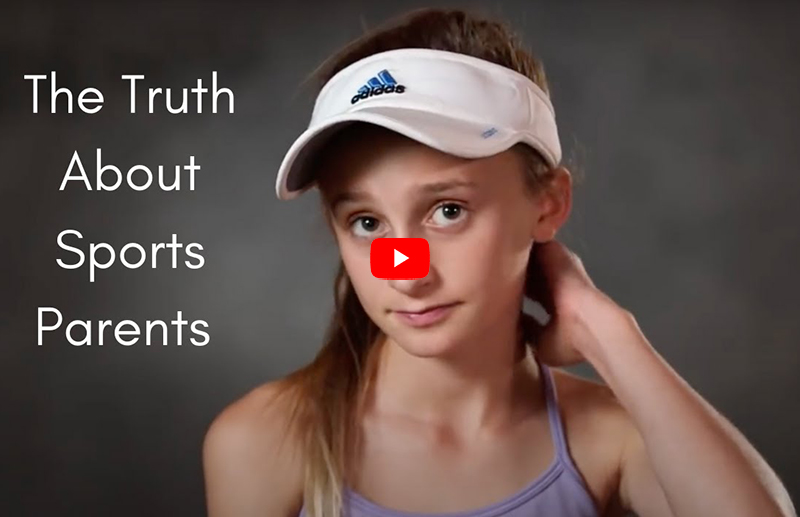
It’s Time To Consider Paths Beyond Division I
It’s Time To Consider Paths Beyond Division I. For decades, the path has seemed clear: if your child is good enough, they’ll play Division I. But the ground under college athletics is shifting—and for families navigating recruiting in 2025 and beyond, narrowing the search to D1 could mean missing out on the best opportunities of all.
Sam Greene, former associate head coach and recruiting coordinator for UCLA women’s soccer and current assistant coach with the University of Chicago sees it every year: talented players overlooking great programs simply because they’re not D1.
“Student-athletes should be open to all divisions,” Greene says. “There’s high-level soccer in every division right now. With fewer D1 roster spots and tighter budgets, you’re limiting your opportunities if you’re only looking at one level.”
The Single Most Important Thing Your Child Should Do If They Want To Play Sports in College
A Changing Landscape
This year’s NCAA settlement marks the beginning of a new era in college sports. With schools now able to pay athletes directly and roster sizes being capped, the recruiting landscape is tightening—especially in non-revenue sports like soccer and volleyball.
At the same time, schools across D2, D3, and NAIA are stepping up—offering competitive programs, strong academics, and holistic student-athlete experiences that rival or exceed what many D1 programs can offer.
“We have four committed players this year who easily could be playing Division I,” Greene says. “But they chose UChicago because we’ll compete for championships and give them a world-class education. That’s not a backup. That’s smart.”
Don’t Overlook Club
If your child wants to keep playing competitively in college, but doesn’t find the right varsity fit, college club sports can be a perfect alternative. They offer high-level play, leadership opportunities, travel, and balance—with fewer demands and more flexibility.
👉 College Club Sports: The Best-Kept Secret in Youth Sports
Real Programs, Real Opportunities
Once families look beyond Division I, the whole landscape changes—and it’s not about stepping down. It’s about stepping into something that fits. Across Division II, III, NAIA, and club, there are schools offering high-level competition, incredible coaching, tight-knit communities, and campus experiences that are every bit as exciting (and in some cases, way less stressful) than D1.
The key is seeing schools for what they actually offer—not just the label on the division. Some have top-notch academics. Others are known for producing powerhouse teams year after year. Some have ocean views from the field, or a coach who’s built a legacy of developing players—not just recruiting stars.
One of my daughter’s high school teammates is a great example. She wasn’t tall—but she had fire, skill, and presence. She ended up at Eastern Connecticut because it had her major, and she was recruited to play volleyball. She didn’t just land there—she thrived. First team all-conference as an outside hitter and an incredible freshman season. That school saw her. And it fit.
That’s the point. Not everyone is going Division I—and not everyone is getting into the top-tier academic D3s either. But that doesn’t mean the other options aren’t amazing. There are so many other programs doing things right, in ways that might be exactly what your child needs.
So instead of asking, “Can they go D1?”
Try asking: “Where can they grow?”
Where will they feel seen? Supported? Stretched—in all the right ways?
And then build your list from there.

Example Programs Worth Exploring
Division II
-
Cal Poly Humboldt (CA) – A stunning coastal campus with a growing athletics program and strong environmental science offerings.
-
Point Loma Nazarene (CA) – Beachside location with surf culture, plus strong baseball and volleyball teams.
-
Grand Valley State (MI) – A consistent D2 powerhouse across sports, supported by robust fan engagement and institutional investment.
Division III
-
Messiah University (PA) – Multiple national championships in soccer and a faith-based community emphasizing character and commitment.
-
Trinity University (TX) – Strong academics in business and pre-law, with national-level athletics and enthusiastic student life.
-
Cal Lutheran (CA) – A tight-knit campus with quality coaching, picturesque Southern California weather, and mountain-to-beach access.
NAIA
-
College of Idaho (ID) – National champs across sports, emerging academics, and at a price point often more affordable than D1.
-
Oregon Tech (OR) – Known for engineering and health sciences, with spirited basketball and cross-country squads.
-
Lindsey Wilson College (KY) – A soccer powerhouse at the NAIA level and a magnet for international talent.
Club Sports
-
UC Santa Barbara (CA) – A true powerhouse in beach club sports, including nationally respected ultimate frisbee and surf teams .
-
University of Michigan (MI) – Offers 38 club teams—from rugby and ultimate to fencing and ice hockey—through an active student-run programs.
-
University of Colorado Boulder (CO) – More than 30 club sports, including nationally ranked cycling, water polo, and crew.
Visiting or following these programs helps families visualize what’s possible. Seeing athletes leading a student-run rugby team at Michigan, walking the beach with UCSB’s surfing club, or attending a Division II playoff in Monterey Bay shifts perspective. It reminds parents and students that there are many meaningful paths—not just one.
When we, as parents, open the conversation and share these options, we remove pressure. We shift the focus from a singular ideal to a broader exploration of where our kids can thrive—on and off the field.
What Coaches Like Sam Are Looking For
Greene offers a clear, no-fluff roadmap for outreach:
-
Send a highlight video around 2:58 minutes—showing offense, defense, and work off the ball. “Make it a clickable link,” she says. “No downloads.”
-
Use bullet points to summarize accomplishments: “SoCal ODP, varsity three years, CIF Second Team, club coach’s contact.”
-
Include graduation year, club name, age group, and contact info (yours and your coach’s). “Put most of that in the subject line,” Greene adds.
-
Personalize the message. Write a short note about why you like the school and how you might fit. “I’m passionate about soccer and would love to connect with your program,” she suggests. “Here’s what I bring, and based on the way your team plays, I believe I could be a good positional fit because you do XYZ.”
-
Don’t assume a coach wants to talk right away. Instead, close with: “Thank you for your time and consideration. I’ve included my contact info below, along with my coach’s, if you’d like to connect.”
The Financial Side: More Aid Than You Think
One of the biggest misconceptions families have is that Division I is the only level where serious scholarship money exists. In reality, some of the best financial packages come from Division II, NAIA, and even Division III—just through different mechanisms.
-
Division II schools offer athletic scholarships, and many build full or partial aid packages by combining athletic money with academic or need-based aid.
-
NAIA schools often have more flexibility and fewer restrictions on how they package scholarships. In some cases, families find NAIA offers more total support than a lower-tier D1 program.
-
Division III programs don’t offer athletic scholarships, but many offer generous academic merit and need-based aid, especially at private schools. The total out-of-pocket cost can be lower than at a state D1 school—even without athletic money.
-
Club sports, while not offering scholarships, often come with significantly lower athletic demands and leave room for students to pursue work-study, paid internships, or other financial priorities.
Greene puts it simply: “If you earn the grades, you earn choices.” And for many families, those choices include real financial flexibility—and less long-term debt.
The Bottom Line
The D1 dream is real. And for some athletes, it’s the right fit.
But it comes with real demands—physically, mentally, emotionally, and financially.
It’s not for everyone.
And it’s not the only path that leads to great competition, strong community, and personal growth.
Because the goal isn’t just to play at the highest level.
The goal is to find the right level—for your child, their joy, and their future.
Let’s Change the Conversation
It starts at home with the parents. We need to open up their eyes and help them unlock new opportunities.
Rock the Point Loma sweatshirt.
Take your kid to a San Francisco State game.
Visit Cal State Monterey Bay or catch a Division II playoff.
Because showing our kids other paths starts with us.
When we lead with perspective, we take the pressure off their shoulders—and remind them:
There’s more than one way to chase a dream.
Resources
NCSA Division 2 Power Rankings
NCSA Division 3 Power Rankings
Club Sports – To find out which club sports a college offers, simply Google the school’s name followed by “club sports” (e.g., “UCLA club sports”). Most are listed under Campus Recreation, not the athletic department, and you’ll usually find a full list of teams with contact info and tryout details.











